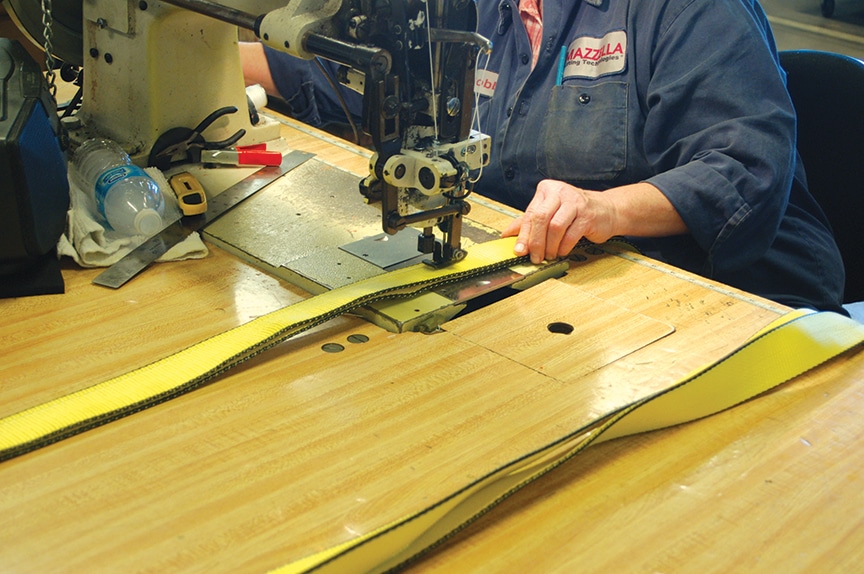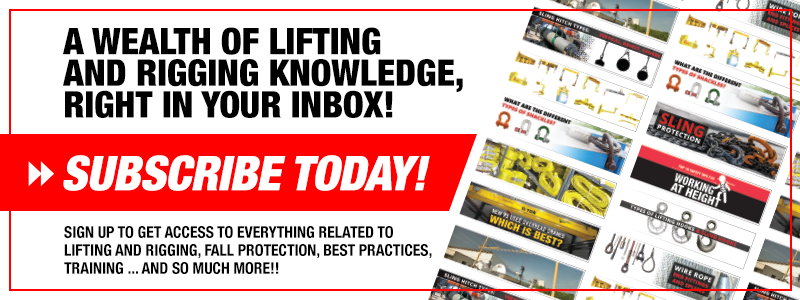Lifting Slings
Inspection, Care, and Use Of Nylon and Polyester Synthetic Web Slings
Are you looking for inspection and removal from service criteria for synthetic web slings? Nylon and polyester web slings are required to be inspected by OSHA and ASME standards at a minimum of every 12 months.
Lexie Keller
January 27, 2014
Removal From Service
A sling shall be removed from service if any of the following are visible:
- Missing or illegible sling identification
- Acid or alkalis burns
- Melting, charring or weld spatter on any part of the sling
- Holes, tears, cuts, snags or embedded particles
- Broken or worn stitching in load bearing splices
- Excessive abrasive wear
- Knots in any part of the sling
- Distortion, excessive abrasive wear
- Any conditions which cause doubt as to the strength of the sling

Operating Practices:
- Determine weight of the load. The weight of the load shall be within the rated capacity of the sling.
- Select sling having suitable characteristics for the type of load, hitch and environment.
- Slings shall not be loaded in excess of the rated capacity. Consideration shall be given to the sling to load angle, which affects rated capacity. (See load charts.)
- Slings with fittings, which are used as a choker hitch, shall be of sufficient length to ensure that the choking action is on the webbing and never on a fitting.
- Slings used in a basket hitch shall have the load balanced to prevent slippage.
- The opening in fittings shall be the proper shape and size to ensure that the fitting will seat properly in the hook or other attachments.
- Slings shall always be protected from being cut by corners, edges, protrusions or abrasive surfaces.
- Slings shall not be dragged on the floor or over an abrasive surface.
- Slings shall not be twisted or tied into knots or joined by knotting.
- Slings shall not be pulled from under loads if the load is resting on the sling.
- Do not drop slings equipped with metal fittings.
- Slings that appear to be damaged shall not be used unless inspected and accepted.
- The sling shall be hitched in a manner providing control of the load.
- Personnel, including portions of the human body, shall be kept from between the sling and the load, and from between the sling and the crane hook or hoist hook.
- Personnel shall stand clear of the suspended load.
- Personnel shall not ride the sling.
- Shock loading shall be avoided.
- Twisting and kinking the legs (branches) shall be avoided.
- Load applied to the hook shall be centered in the base (bowl) of hook to prevent point loading on the hook.
- During lifting, with or without the load, personnel shall be alert for possible snagging.
- The sling’s legs (branches) shall contain or support the load from the sides above the center of gravity when using basket hitch.
- Slings shall be long enough so that the rated capacity of the sling is adequate when the angle of the legs (branches) is taken into consideration (see load charts).

